Definition
Connective tissue is found between other tissue types and organs. It contains high quantities of water, several types of cells, and a fibrous extracellular matrix. The connective tissue of an organ is usually referred to as the stroma. This tissue type can have very different structures according to the proportions of its components. Specialized forms includes bone, cartilage, fat, and even blood.

What is Connective Tissue?
Connective tissue is a connecting framework of cells, aqueous ground substance, and fibers. Different proportions of its basic ingredients can affect function, type, and location. Although no studies have yet confirmed these results, a report from the Asian Center for Reference Man Studies in Tokyo, Japan, estimates that there are between 3300 and 4300 grams of this tissue type in the average person.

Connective Tissue Fibers
There are three types of extracellular fibers:
- Collagenous fibers
- Elastic fibers
- Reticular fibers
Collagenous or collagen fibers are the most prolific. Each collagen fiber is the result of smaller fibrils; fibrils are themselves constructed from microfibrils. The proteins that construct these microfibrils can differ.
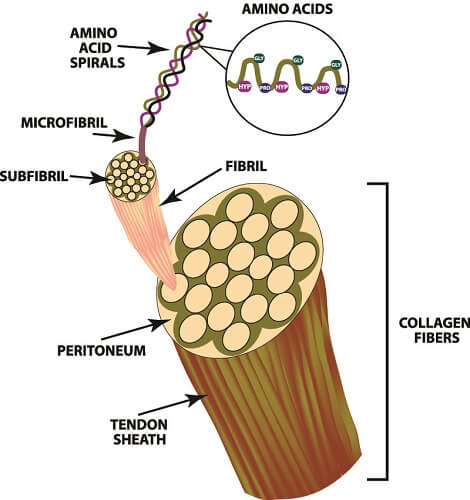
Collagen fibers have only a small level of elasticity but are extremely strong.
Elastic fibers, when grouped, are yellow. These are also composed of microfibrils contained within a matrix. It is the protein in this matrix that allows for stretch – it is called elastin. An elastic fiber will stretch to around one and a half times its relaxed length.

Reticular fibers are very fine threads and, unlike elastic fibers but like collagenous fibers, contain collagen (but of a different microfibril protein type to collagenous fibers). Reticular fibers do not need to be very strong or elastic – they support individual cells.

All extracellular fibers are contained within a gel-like solution called ground substance. The combination of ground substance and extracellular fibers makes up the extracellular matrix. Add cells to the extracellular matrix and you have connective tissue.
Ground Substance
Ground substance is found in all cavities, keeping the organs hydrated but also a temporary store and mode of transportation for water, salts, and other small molecules.
The main ingredient in ground substance – apart from water – is proteoglycans; these provide the gel-like consistency of the ground substance. They are polysaccharide chains with sporadically-linked proteins.
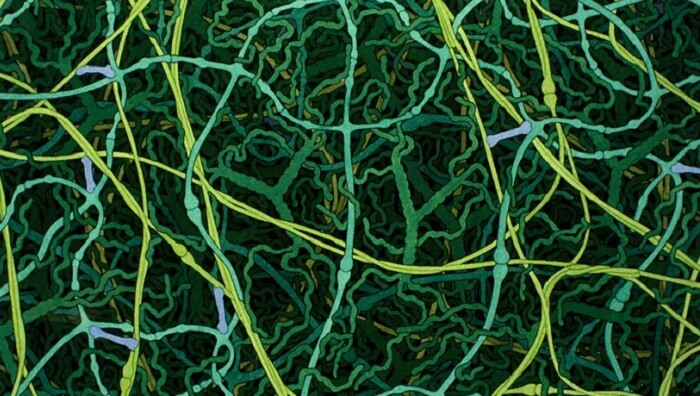
The polysaccharides come from another ground substance ingredient – glycosaminoglycans, usually in the form of hyaluronic acid.
You may have seen hyaluronic acid treatments at cosmetic counters. As this acid forms a structural base for connective tissue, it is thought that it can tighten the skin and reduce the signs of aging. Hyaluronic acid easily binds to water molecules but its molecules are very large. Without additional treatments like micro-needling or deep chemical peels, topical hyaluronic acid will not penetrate the epidermis.
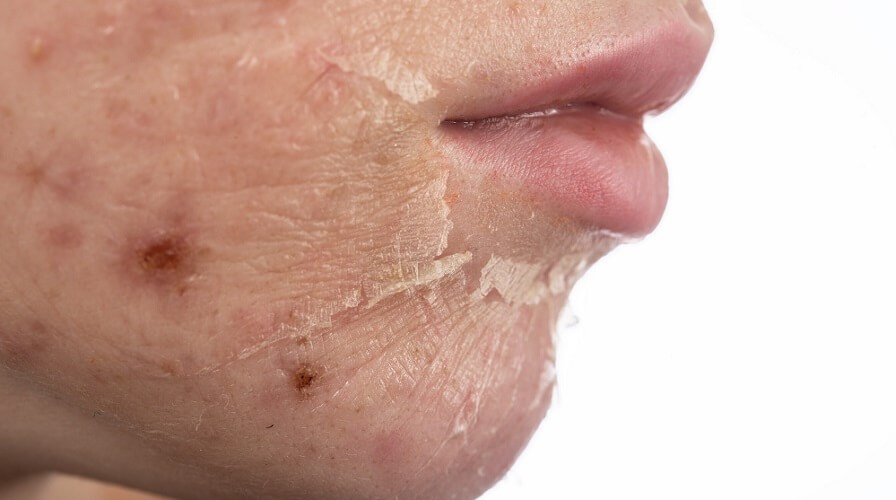
The other four main glycosaminoglycans are chondroitin, dermatan, keratan, and heparan sulfate. These link to the main hyaluronic acid structure as seen below.
All glycosaminoglycans bind to water and positively-charged ions; the bound water allows gases, charged ions, and smaller molecules to dissolve and so pass through the extracellular matrix. Because larger molecules cannot get move through the matrix, it also provides a protective barrier against many types of bacteria.
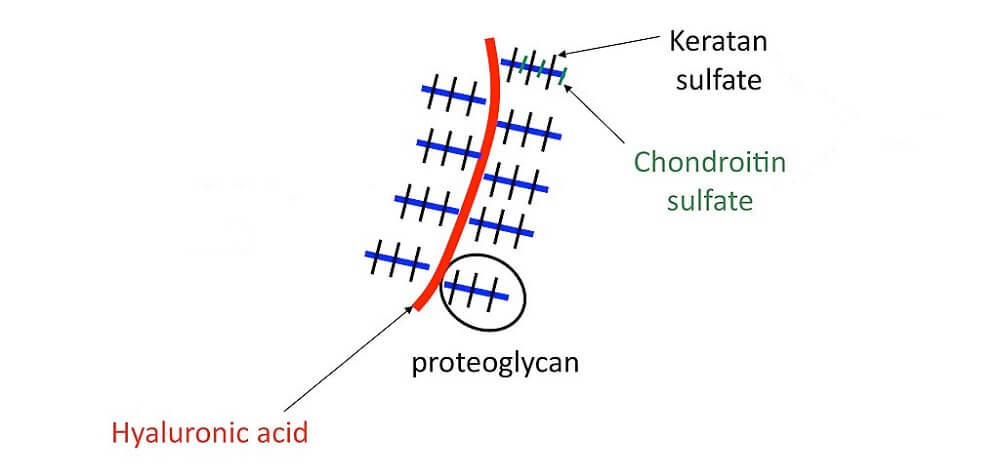
Connective Tissue Cells
Connective tissue cells are divided into fixed and wandering types. Immune cells wander through the extracellular matrix looking for foreign particles and dead cells.
Fixed cells are fibrocytes, reticulocytes, and adipocytes. Fibrocytes do not contain as many organelles as most cells; however, this is when the cell is dormant. When the cell is activated by local tissue damage, it becomes a fibroblast.
Fibroblasts have many organelles – they produce reparative proteins and send them to where they are needed. Sometimes, fibroblasts can contract and are then known as myofibroblasts.

In specialized connective tissue, different fixed cells like osteocytes (bone) and chondrocytes (cartilage) are found in large quantities.
Reticular cells produce reticular fibers but play the role of fibrocytes in areas of tissue that contain reticular fibers.
Adipocytes or fat cells are also fixed within the extracellular matrix. As with all fat cells, they store lipids.
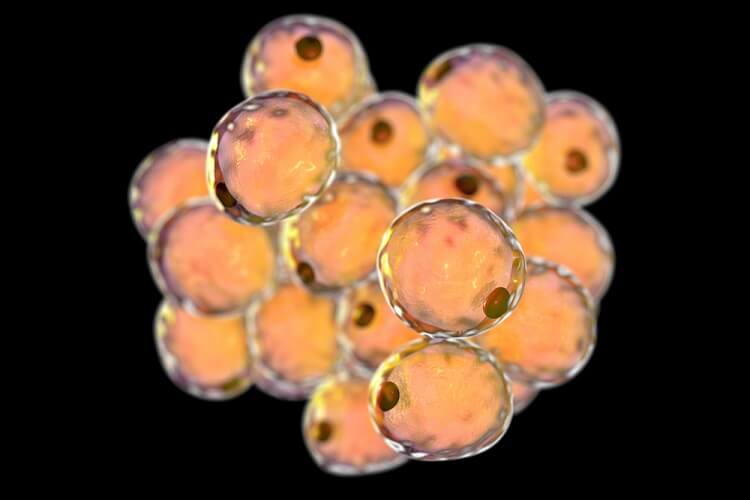
Wandering cells are usually immune cells. Macrophages look for foreign particles to consume via phagocytosis. Mast cells release heparin and histamine that bring more blood (and immune cells) to the area when local tissue is under attack. Lymphocytes are found in smaller numbers; when attacked by recognized pathogens, B cells become plasma cells and release antibodies. Eosinophils are phagocytes that arrive on the scene to digest any antigens that have been marked by B-cell antibodies.
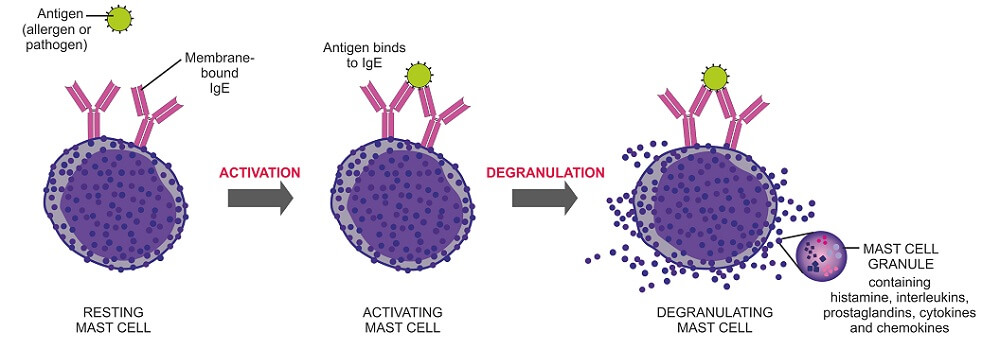
A different type of wandering cell is the mesenchymal cell. This is a precursor cell of other cells involved in the production of the extracellular matrix, although populations are limited after a person has reached adulthood. Mesenchymal cells repair other close-lying structures such as blood vessels.
Connective Tissue Types
Connective tissue is one of four main tissue types:
- Epithelia
- Connective tissue
- Muscle
- Nerves
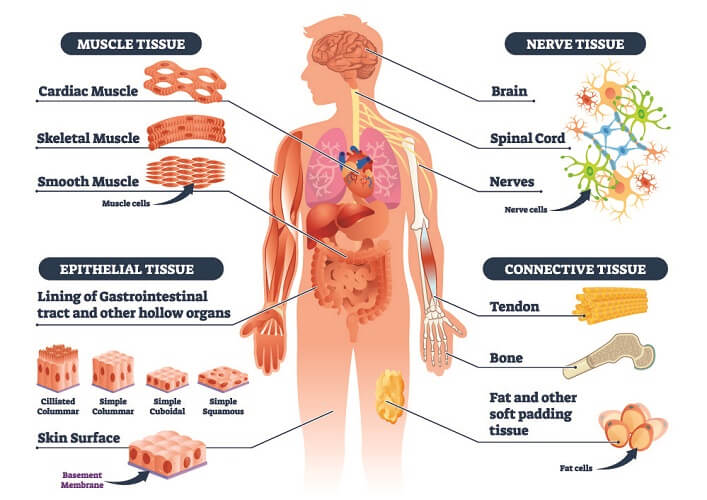
Epithelial tissue covers our external surfaces (our skin) and lines internal organs and cavities. Muscles are also very visible thanks to their large volumes. The average muscle mass for an adult female of around 30 years is almost 30% of her body weight. Our nervous system flows through the entire body and includes the brain, spinal cord, and every single nerve. Connective tissue with a fluid matriix is often considered to be less important; however, it is found in large quantities and is essential.
Compared to the other tissue types, connective tissue has lower populations of cells and an extensive extracellular matrix. But it also has many different features, forms, and uses than you might expect.
Loose and Dense Irregular Connective Tissue
Non-specialized or general connective tissue, sometimes called connective tissue proper, is subdivided into two groups: loose and dense.

Loose regular tissue has a fluid matrix and low proportions of arranged (regular) fibers. The loose form is sometimes called areolar connective tissue and is found:
- Surrounding blood vessels
- Between muscle fascia (as sliding tissue)
- As the endomysium of muscle around muscle fibers
- Below the dermis
- Below epithelial cell layers
- In the form of the lamina propria of several organs (see above)
- In the form of the mesentery
- As mucous membranes
- In glands
The loose structure means it is easy for nutrients and gases to pass through. Any capillary traveling through areolar tissue can easily release oxygen and nutrients and absorb carbon dioxide and other waste products.

Dense irregular connective tissue has many fibers but these are not structured as with regular tissue types. This is what the dermis is made of, as well as the area of the breast just under the nipple.
In the muscles, every muscle fiber bundle is wrapped in a membrane of dense irregular connective tissue called the epimysium; the perimysium is composed of the same tissue (see below). The meninges surrounding the brain are also composed of dense tissue.
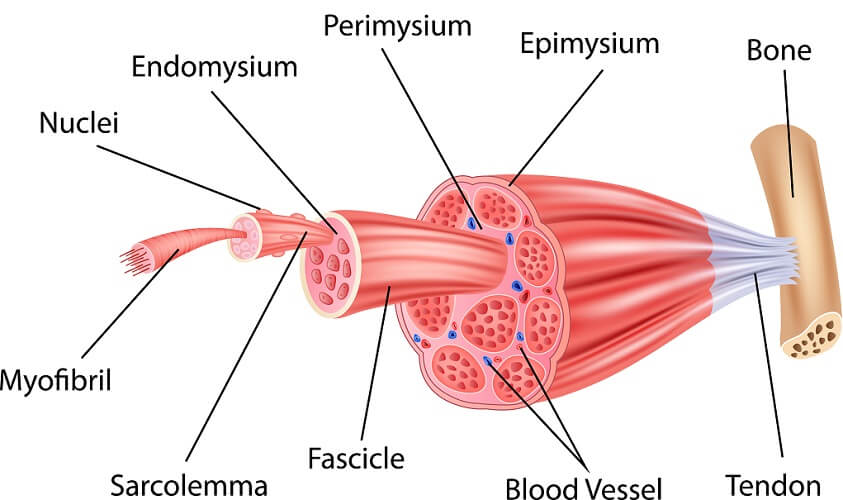
Specialized Connective Tissue
Specialized connective tissue comes in surprising forms. This group includes related tissues that form our tendons, body fat, bones, and cartilage.
Dense connective tissue is dense because of the high proportion of fibers that run parallel to each other. Dense regular tissue is found in tendons, ligaments, and muscle fascia. In many sources, this type is listed as connective tissue proper; however, it is found in specific locations and can fit into either category.
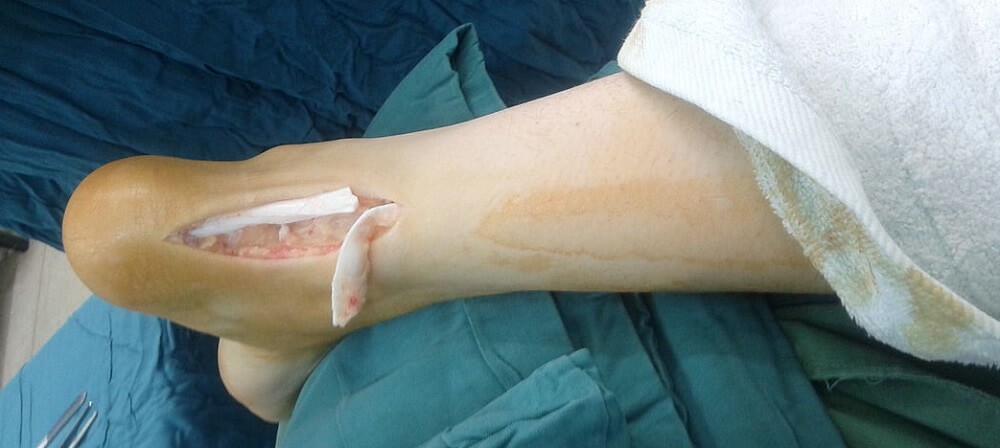
Bone is a specialized connective tissue type. Instead of an aqueous extracellular matrix, the ground substance is mineralized and hard. High levels of collagen fibers make our bones shock-resistant by absorbing energy. Furthermore, bones are covered by a connective tissue membrane called the periosteum.

Cartilage is slightly elastic, rigid, thick, and smooth. Cartilage is further classified into elastic-, hyaline-, and fibro-cartilage – names that indicate different proportions of fibers and proteoglycans.
This tissue type contains large amounts of lubricin (glycoprotein) and chondrocytes instead of fibrocytes. Due to the thick extracellular matrix, cells do not have a great range of motion and natural repair mechanisms are extremely slow.
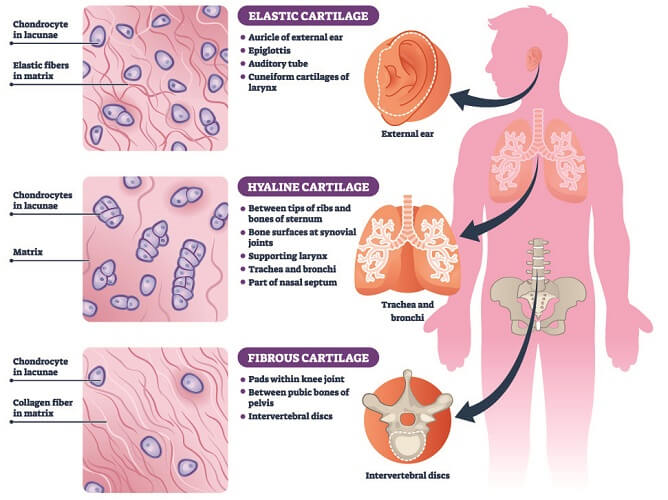
Blood has a watery matrix (plasma) and soluble proteins (fibronigen and fibronectin). When activated by the enzyme thrombin, fibrinogen and fibronectin form an insoluble fiber called fibrin; fibrin is an essential component of the blood clotting process. Naturally, blood also contains cells in the form of white blood cells, red blood cells, and platelets.
Adipose tissue (fat) does not contain fibroblasts, a true matrix, or many fibers. Even so, it is a type of connective tissue.
Connective Tissue Function
Connective tissue function is structural, metabolic, and protective. Bone tissue (osseous tissue) is extremely rigid and absorbs energy; cartilage is smooth and lubricated to provide for easy, pain-free movement; our blood brings oxygen and nutrients all over the body and transports waste products to the kidneys and liver. White blood cells within the extracellular matrix help to protect us from antigens and pathogens.
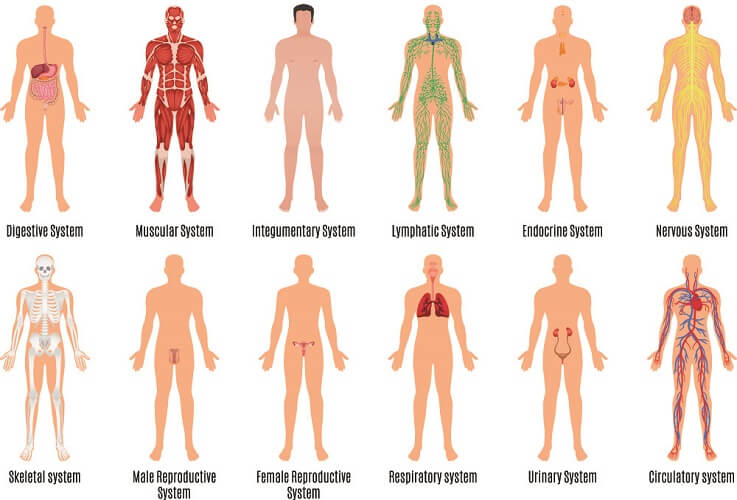
All connective tissue is supportive, either at a cellular level (reticular fibers) or as a support system for larger organs or structures. It stores energy in the form of lipids and transfers forces via tendon attachments. This tissue type is responsible for how smooth our skin looks and is a major contributor to how quickly our body heals. Elastic properties allow expansion and contraction; collagenous properties add strength; gel-like consistencies can be watery or thick. These many different features give it hundreds of different functions.
Connective Tissue Disease
Connective tissue disease and connective tissue disorders can affect any of the above-mentioned structures. As this tissue is so widespread, the effects of disease can be very different.

There are more than 200 illnesses ‘connected’ to connective tissue. Some are the result of genetic disorders, some are caused by autoimmune processes. Connective tissue cancer occurs as the result of mutation in any associated cell type; sarcomas and leukemia begin in bone tissue, for example.
Skin lesions that begin in the dermis like dermatofibromas and benign swelling caused by abnormal myofibroblast proliferation (as in cases of infantile myofibromatosis) are known disorders of connective tissue. The scope of this topic is incredibly broad, just like the many functions, types, and locations.

Similarly, connective tissue disease symptoms and connective tissue disease treatment depends on the affected components of the tissue and/or the tissue ingredients. Most such diseases are treated by a specialist of a certain anatomical or physiological area, or pathology.
